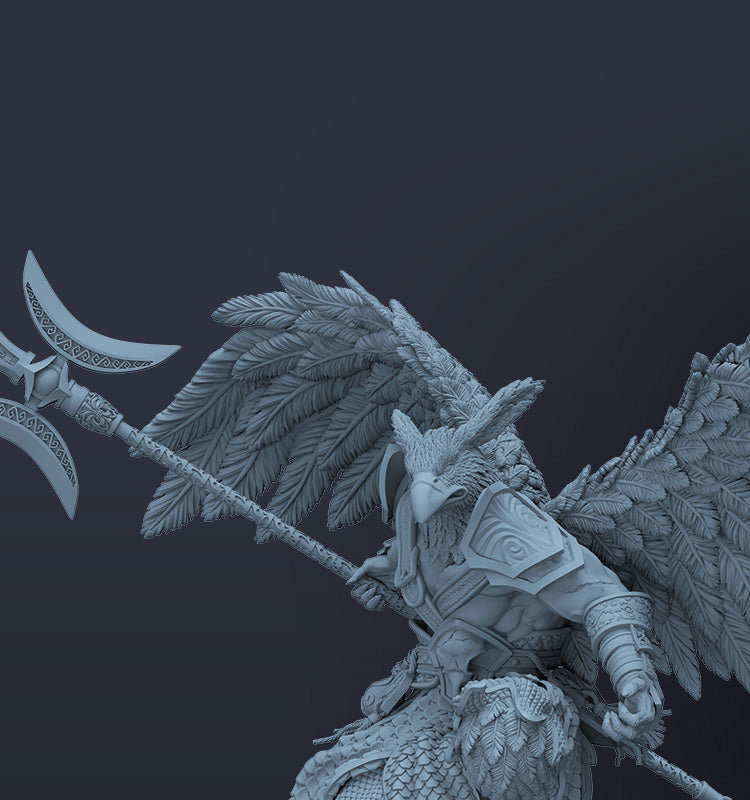SLA printing is a common 3D printing technology that can achieve high-precision model printing and is widely used in many fields. For 3D printing enthusiasts or beginners, SLA 3D printers are one of the most popular choices among consumer-grade 3D printers, which can help them realize these interesting ideas in a short time. However, getting started with SLA printing is not a very simple matter, especially for beginners who most likely don’t know where to start. In this guide, we will introduce what is SLA 3D printing, as well as the working process of SLA printers. Hope it helps you understand SLA printing and complete your ideal model.
The material used in SLA printing is photosensitive resin, which shapes the liquid resin into an ideal three-dimensional model through a light-curing reaction. Common resin printing includes DLP printing, MSLA printing, and the latter is also know as LCD-based SLA 3D printing.

SLA Additive Manufacturing: What is SLA Printing?
3D printing belongs to additive manufacturing, involving various technologies such as FDM, SLA, SLS, DLS. Among them, SLA uses ultraviolet laser with specific wavelength and intensity to react the photosensitive polymer through light-curing, and build the entity of 3D model layer by layer.
SLA printers use precisely controlled laser scanning to transform resin from a liquid to a solid state, shaping it into specific contours and shapes in the process, curing one layer and then the next until a complete 3D model is built. This is SLA additive manufacturing, based on the digital model, from point to surface, layer by layer, a model can be directly completed in a short period of time. This is a very intelligent and precise control technology. At the same time, it reduces the waste of materials to a great extent and is an efficient use of resources.

SLA Printer: How Does SLA 3D Printer Work?
The center of SLA printer is the build platform that can be raised and lowered, and the resin tank, which seems to be the main work of 3D printing. What is the working process of the SLA 3D printer? First, a model file that can be read by the printer needs to be imported into the machine. 3D printers are struggling to enable direct control the printer from a computer or mobile device, but most SLA printers today still use USB sticks. After the model data is read by the printer, the scanning of the laser and the movement of the lifting table will be precisely controlled.

At the beginning, SLA printer’s build platform of the SLA printer is immersed in a containing liquid resin, and the laser is irradiated to the surface of the resin according to the prescribed path, and a layer is cured to form a cross section. The build platform is raised and then lowered a certain distance, and the cured layer is covered with another layer of liquid resin to cure the next layer. Each layer is firmly glued to the previous layer, as the number of layers increases, the build platform is dipped in a resin tank and raised and lowered repeatedly until the digital model is built, form bottom to top.

Once the model is printed, the bottom of the model is attached to the build platform. We can remove the model for cleaning and follow-up work. Liquid resin is toxic, so be careful not to touch it directly. The liquid resin will remain on the surface of the printed model, so the print needs to be soaked or washed with alcohol, it will not last long, but is necessary. If you want to stabilize the printed resin model, you can post-cure it. Sunlight is one of the easiest ways to handle it. For more information on post processing please refer to this guide: How to Post Process Resin Prints . After cleaning and post-curing, SLA resin prints typically have an extremely fine and smooth surface, with strong qualities such as resistance.
Materials and Applications of SLA 3D Printing
Unlike the filaments used in FDM printers, the material used in SLA 3D printing is photosensitive resin, and the printed surface is smoother than PLA materials. With the price reduction of photosensitive resin 3D printers, this high-precision, high-surface-effect 3D printing technology has gradually entered people's field of vision.
Light-curing 3D printing technology and photosensitive resin materials play an important role in fields such as medical care and product models. With the continuous development of photocuring technology, its precision is getting higher and higher, making photocuring technology have broad application prospects in micro-machine manufacturing, in the development of automobiles, education, art and other fields.
Best Desktop SLA 3D Printer
Because traditional SLA printers are limited by printing speed and laser projection efficiency, currently, desktop-level SLA printers on the market actually use MSLA printing technology, which is what we often call LCD-based SLA printers. With this type of resin printer, the resolution of the LCD screen usually determines the accuracy of the model. If you want to choose a high-precision and large-size LCD-based SLA printer, Anycubic Photon M3 should be the most recommended desktop printer.
Anycubic Photon M3 resin printer adopts a 7.6-inch screen, and the maximum printing volume is 180 x 163 x 102 mm. The machine adds a replaceable anti-scratch film for the screen (a protective film is attached for replacement), which can effectively prevent liquid resin from penetrating into the LCD screen, and generally make the screen more durable. The Photon M3 4K+ monochrome resin printer with a high resolution of 4,096 x 2,560 px helps to print sharper and finer surface textures. The fastest printing speed of Photon M3 resin printer can reach 50mm/h, and the single-layer exposure curing time is as low as 1.5s. It only takes 2.5 hours to print a 12cm model, which is 2.5 times that of other 2k resin printers, which helps to get the model faster. On the basis of machine technical parameters, we look at the price of Anycubic Photon M3, which is less than $300, so we can say that this is one of the most cost-effective LCD-based SLA printers.




